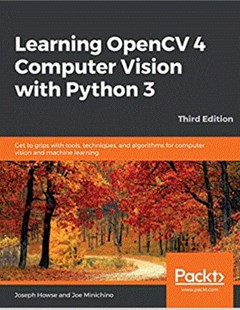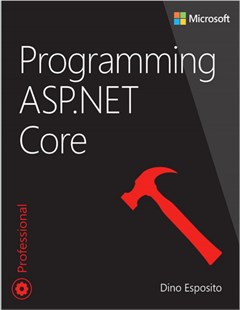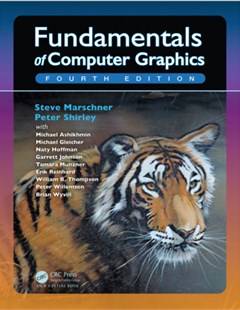Learning OpenCV 4 Computer Vision with Python 3
This book covers the latest on depth cameras, 3D tracking, augmented reality, and deep neural networks, helping you solve real-world computer vision problems with practical code
2020
Build powerful computer vision applications in concise code with OpenCV 4 and Python 3
Learn the fundamental concepts of image processing, object classification, and 2D and 3D tracking
Train, use, and understand machine learning models such as Support Vector Machines (SVMs) and neural networks
Book Description
Computer vision is a rapidly evolving science, encompassing diverse applications and techniques. This book will not only help those who are getting started with computer vision but also experts in the domain. You'll be able to put theory into practice by building apps with OpenCV 4 and Python 3.
You'll start by understanding OpenCV 4 and how to set it up with Python 3 on various platforms. Next, you'll learn how to perform basic operations such as reading, writing, manipulating, and displaying still images, videos, and camera feeds. From taking you through image processing, video analysis, and depth estimation and segmentation, to helping you gain practice by building a GUI app, this book ensures you'll have opportunities for hands-on activities. Next, you'll tackle two popular challenges: face detection and face recognition. You'll also learn about object classification and machine learning concepts, which will enable you to create and use object detectors and classifiers, and even track objects in movies or video camera feed. Later, you'll develop your skills in 3D tracking and augmented reality. Finally, you'll cover ANNs and DNNs, learning how to develop apps for recognizing handwritten digits and classifying a person's gender and age.
By the end of this book, you'll have the skills you need to execute real-world computer vision projects.
What you will learn
Install and familiarize yourself with OpenCV 4's Python 3 bindings
Understand image processing and video analysis basics
Use a depth camera to distinguish foreground and background regions
Detect and identify objects, and track their motion in videos
Train and use your own models to match images and classify objects
Detect and recognize faces, and classify their gender and age
Build an augmented reality application to track an image in 3D
Work with machine learning models, including SVMs, artificial neural networks (ANNs), and deep neural networks (DNNs)
Who this book is for
If you are interested in learning computer vision, machine learning, and OpenCV in the context of practical real-world applications, then this book is for you. This OpenCV book will also be useful for anyone getting started with computer vision as well as experts who want to stay up-to-date with OpenCV 4 and Python 3. Although no prior knowledge of image processing, computer vision or machine learning is required, familiarity with basic Python programming is a must.
Table of Contents
Understanding OpenCV and Setting Up Environment
Handling Files, Cameras, and GUIs
Processing Images with OpenCV
Depth Estimation and Segmentation
Detecting and Recognizing Faces
Retrieving Images and Searching Using Image Descriptors
Building Custom Object Detectors
Tracking Objects
Camera Models and Augmented Reality
Neural Networks with OpenCV - An Introduction
Appendix 1: Bending Color Space with a Curves Filter
Joseph Howse, Learning OpenCV 4 Computer Vision with Python 3,Packt Publishing,2020
 |  |  |
| Programming ASP.NET Core | Fundamentals Of Computer Graphics (4 Edition) |
Thứ Hai, 15:15 14/11/2022
Copyright © 2018 Hanoi University of Industry.